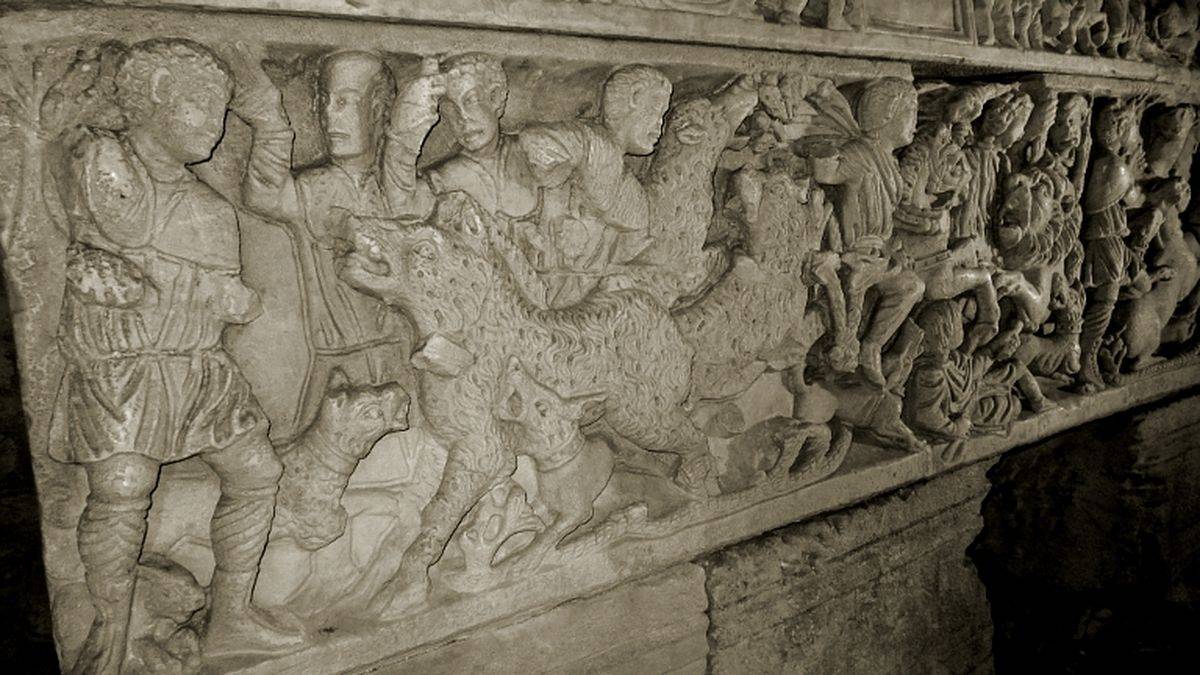 Ludre's grave | ©Anecdotrip.com / CC-BY-NC-SA
Ludre's grave | ©Anecdotrip.com / CC-BY-NC-SAA Treasure, here? Really? Yes it is, come here... The two crypts had one and only room, 2,50 metres long and 3 metres large. They are vaulted, and in one of them, we see the gorgeous sarcophagus of saint Ludre, described for the first time in a text written by Grégoire of Tours.
Ludre? His father Léocade, a Roman proconsul in the 3th century, was sent in Berry by Emperor Augustus, to be a governor. He moved in Déols where he raised his palace. He gave his luxurious house in Bourges to the first bishop of the city, saint Ursin, in order to raise the current cathedral...
Then, Léocade and his son Ludre became Christians after their baptism. But Ludre died... And he and Léocade were buried here, in those small crypts. Ludre's sarcophagus is made of white marble. This material was unknown at that time in France, so we think it came from Italy.
We can see 3 parts: the basis with the breach (a hole where ill children used to enter in, because the stone cured diseases!), the sarcophagus itself and the cover.
We can see a beautiful low-relief representing a hunting scene, with lions, deers and boars. Men ride horses, other men, on foot, attack those wild beasts. Some historians saw here the representation of Léocade, especially with this wounded lion (leo cadit means “fallen lion” in Latin)...
Léocade’s tomb is simpler than Ludre’s one, made of a simple freestone. In the 17th century, Léocade’s last remains were still in the tomb: but they disappeared during the Revolution...
